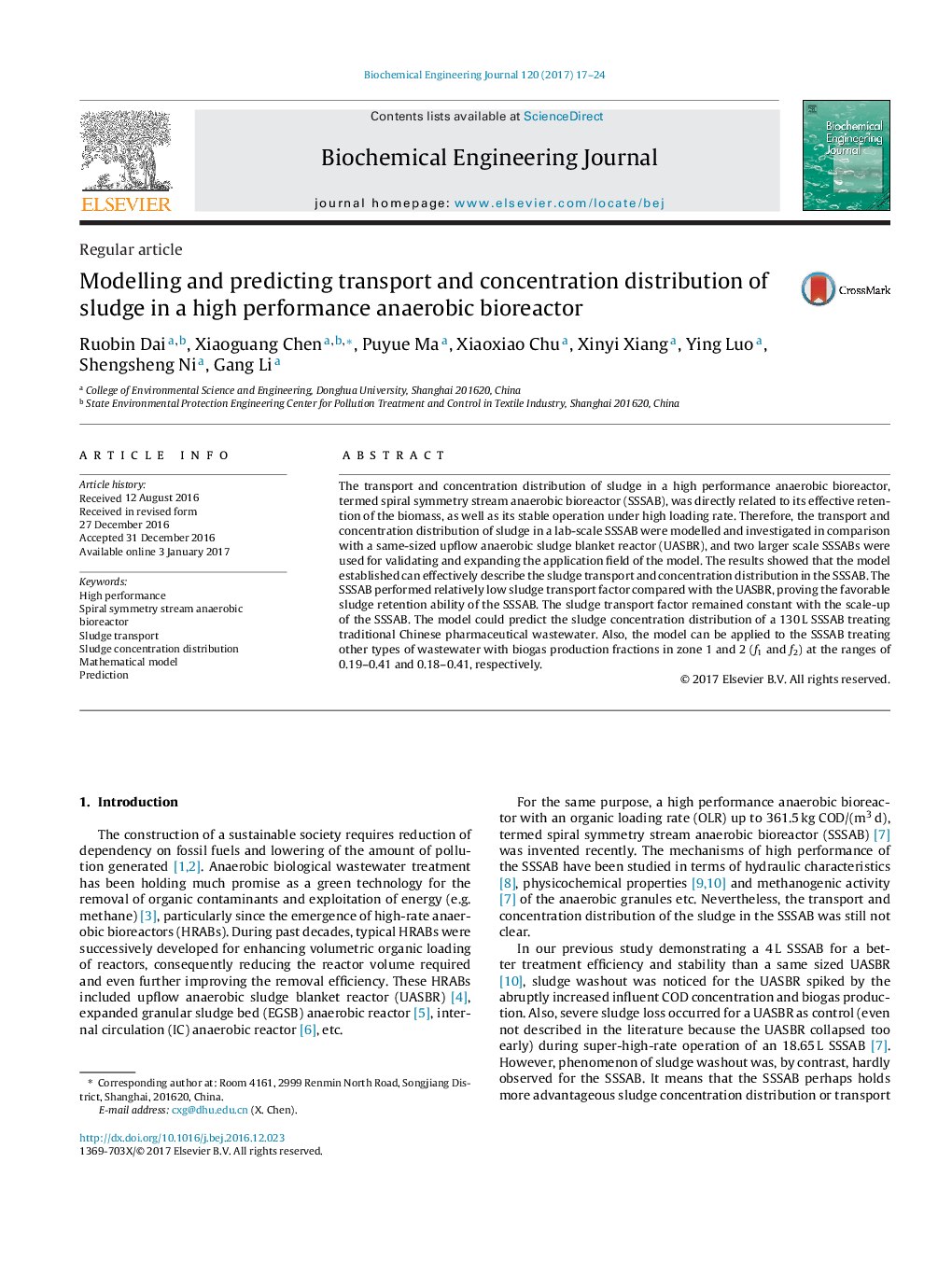| Article ID | Journal | Published Year | Pages | File Type |
|---|---|---|---|---|
| 6450343 | Biochemical Engineering Journal | 2017 | 8 Pages |
â¢Sludge transport and concentration distribution (STCD) was modelled in the SSSAB.â¢STCD of the SSSAB was studied and validated useful in three scales.â¢SSSAB showed better sludge retention ability compared with UASBR.â¢The model can be used for predicting STCD towards various wastewaters for the SSSAB.â¢The application of the model benefits prevention of sludge washout from the SSSAB.
The transport and concentration distribution of sludge in a high performance anaerobic bioreactor, termed spiral symmetry stream anaerobic bioreactor (SSSAB), was directly related to its effective retention of the biomass, as well as its stable operation under high loading rate. Therefore, the transport and concentration distribution of sludge in a lab-scale SSSAB were modelled and investigated in comparison with a same-sized upflow anaerobic sludge blanket reactor (UASBR), and two larger scale SSSABs were used for validating and expanding the application field of the model. The results showed that the model established can effectively describe the sludge transport and concentration distribution in the SSSAB. The SSSAB performed relatively low sludge transport factor compared with the UASBR, proving the favorable sludge retention ability of the SSSAB. The sludge transport factor remained constant with the scale-up of the SSSAB. The model could predict the sludge concentration distribution of a 130Â L SSSAB treating traditional Chinese pharmaceutical wastewater. Also, the model can be applied to the SSSAB treating other types of wastewater with biogas production fractions in zone 1 and 2 (f1 and f2) at the ranges of 0.19-0.41 and 0.18-0.41, respectively.
Graphical abstractDownload high-res image (293KB)Download full-size image
